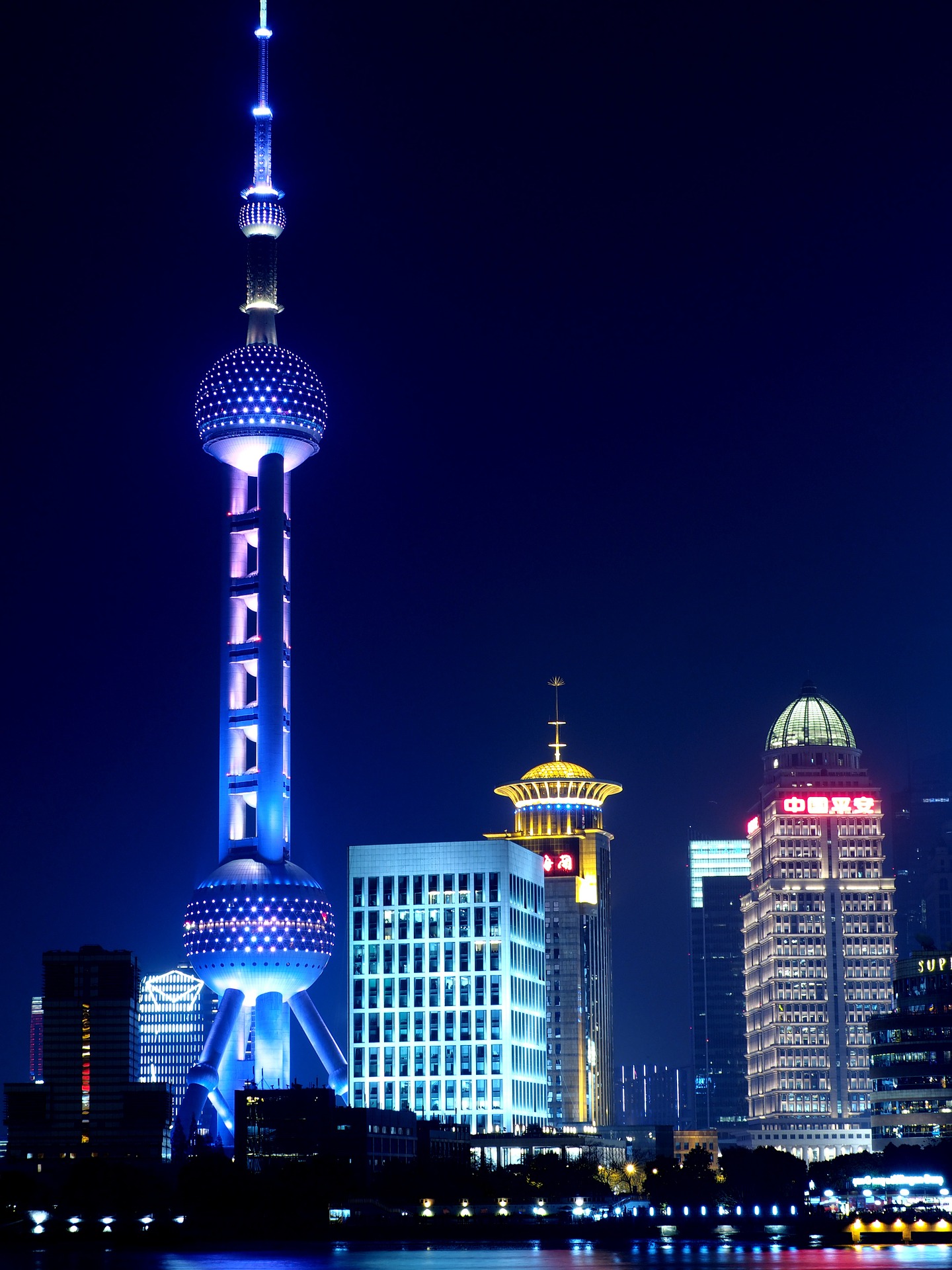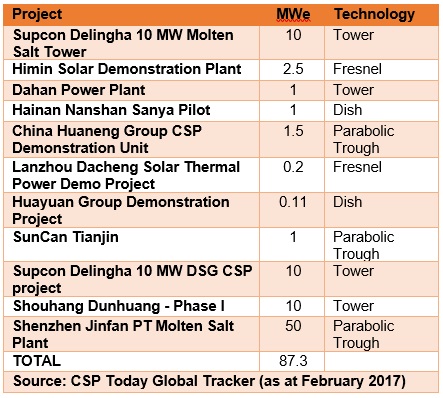Chinese CSP developers hire foreign advisors to speed deployment
Developers must overcome limited build experience and China’s severe weather challenges to meet tight construction deadlines set out in the country’s first large-scale deployment program, industry experts said.

Related Articles
China awarded its first batch of 20 CSP projects in September 2016, including nine solar towers, seven parabolic trough plants and four Linear Fresnel plants.
The projects must be completed by the end of 2018 to be eligible for the Feed-in-Tariff (FiT) of 1.15 yuan/kWh ($0.17/kWh). This gave developers just over two years to secure financing, select an engineering, procurement and construction (EPC) contractor, and construct the plant.
A two-year timeframe may be sufficient in more mature CSP markets, but not in developing markets such as China or India, Fengli Du, vice general-secretary of China National Solar Thermal Energy Alliance, told New Energy Update.
“Two years is not enough for the construction of a CSP plant, especially as wintertime in northwest of China brings extremely low temperatures which can prevent civil work for several months,” Du said.
When India set a similar timeframe (28 months) for the commissioning of seven CSP projects in 2013, developers requested a 6 to 12-month extension. India’s government responded by extending the deadline by 10 months but issues with financial closure, site infrastructure and equipment delivery delayed projects and only three projects have been completed.
More recently, the Dubai authorities have outlined a three-year construction window for a 200 MW solar tower facility, the United Arab Emirates’ second CSP plant.
The Dubai Electricity and Water Authority (DEWA) is to award the contract for the project in the second half of 2017 and expects the facility to be online by April 2021.
Weather windows
Many of China’s first CSP plants will be located in regions which experience severe weather-- such as the Western regions of Qinghai and Yunnan.
These areas can be hit by sandstorms and temperatures which can swing from as low as minus 40 degrees celsius to as high as 20 degrees Celsius in one day, Wei Zhu, CEO of Thermal Focus, a Shanghai-based provider of solar tracking systems, said.
According to Du, some companies are choosing to continue with civil work during the winter while they secure financing and conduct tenders for construction work.
“They are all trying to complete their projects within the timeframe,” she said.
China currently has a successful track record in developing and nuclear, fossil fuel, hydropower, PV and wind power plants, but there is little experience in large-scale CSP construction.
“The main challenge is the lack of experience in system design and integration. China has many demonstration loops and systems, but now the minimal capacity [in the pilot program] is 50 MW. Going from 1 MW to 50 MW and 100 MW will not be easy,” Du said.
China's operational CSP plants

To shorten the learning curve and reduce project risks, local developers are now contracting experienced international CSP consultants.
For example, German engineering consultancy SolEngCo was selected by a Chinese electric power design institute to offer basic and general engineering services for a Chinese CSP plant, Wang Zhen, China representative for SolEngCo, told New Energy Update.
Swedish-Spanish firm AF Aries Energia is also supporting CGN Power Group’s 50 MW Delingha project as owner’s engineer, guiding them in the tender process to select an EPC contractor and the main equipment.
Meanwhile, Advisian, the global advisory business of WorleyParsons, is acting as owner engineer for a 50 MW solar tower being supplied by EPC contractor North China Power Engineering (NCPE).
Supply support
One major advantage for developers in China is the country's comprehensive supply chain, requiring minimal imports.
Major components such as parabolic trough receiver tubes (heat collecting elements), reflectors, raw glass, molten salt and thermal oil, can all be supplied and installed at relatively low cost.
“China has a robust manufacturing industry and the cost of bulk material is lower domestically,” said Fabio Wang, technical manager at SunCan, the CSP subsidiary of Beijing Shouhang IHW Resources Saving Technology Co.
SunCan is currently developing a 100 MW solar tower in Dunhuang, Gansu province and technology supplier for two 100-MW solar tower projects in Jinta and Yunmen, Gansu province. The company is also the EPC contractor for a 50 MW parabolic trough project in Delingha, Qinghai province.
By working in partnership with international consultants and engineering firms, Chinese companies will benefit from the learnings gained in other markets, Du said.
“Chinese developers have to keep an open mind and ask for help from experienced international teams, especially owner’s engineers…[while] China has its own conditions, at least some mistakes can be avoided,” she said.
By Heba Hashem
